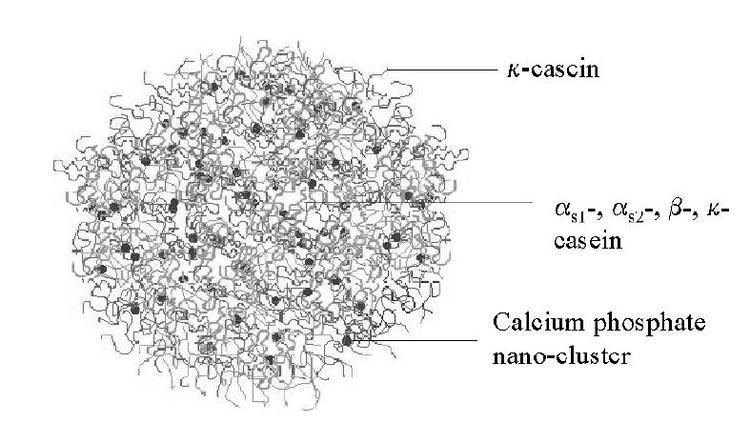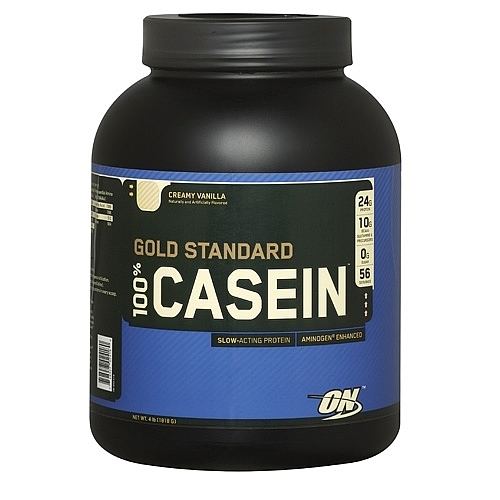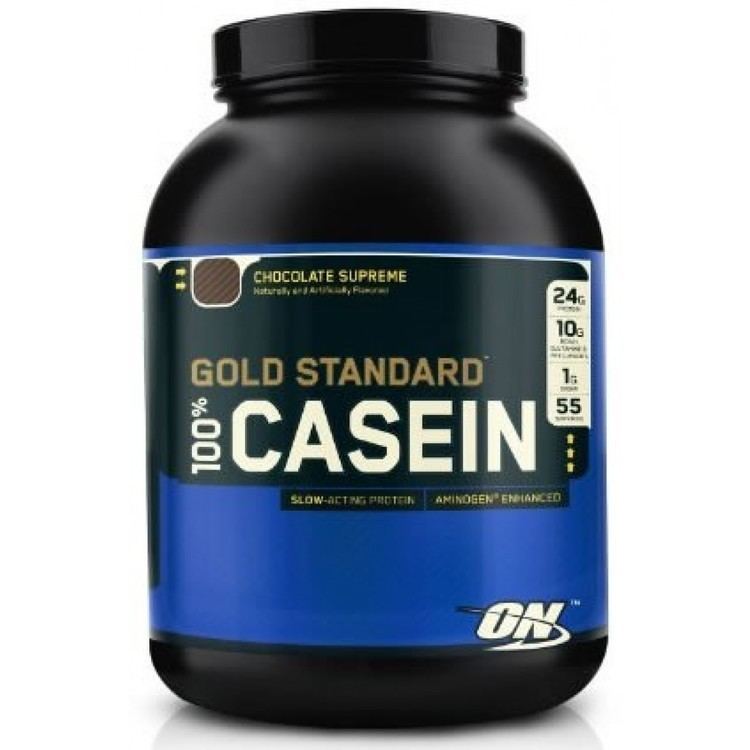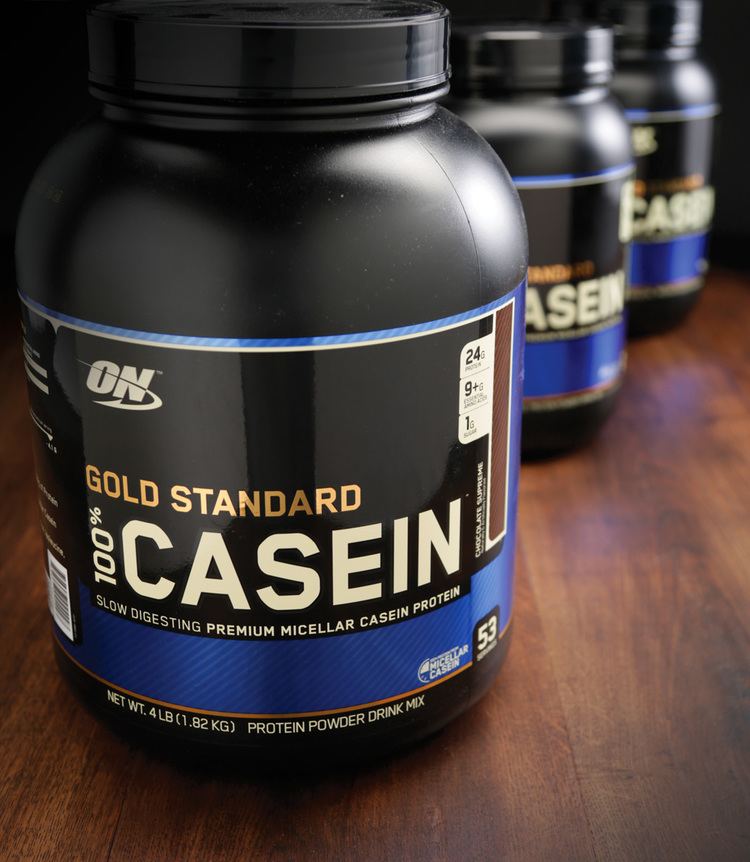 | ||
Similar Whey, Milk, Gluten, Soy protein, Soybean | ||
What is casein protein and best time to take casein protein health and fitness guru mann
Casein (/ˈkeɪs.ɪn/ or /ˈkeɪˌsiːn/, from Latin caseus, "cheese") is the name for a family of related phosphoproteins (αS1, αS2, β, κ). These proteins are commonly found in mammalian milk, making up 80% of the proteins in cow's milk and between 20% and 45% of the proteins in human milk. Casein has a wide variety of uses, from being a major component of cheese, to use as a food additive, to a binder for safety matches. As a food source, casein supplies amino acids, carbohydrates, and the two inorganic elements calcium and phosphorus.
Contents
- What is casein protein and best time to take casein protein health and fitness guru mann
- How to use casein protein new video
- Composition
- Paint
- Glue
- Cheesemaking
- Plastics and fiber
- Protein supplements
- Medical and dental uses
- Autism
- A1A2 beta caseins in milk
- Casein allergy
- References

How to use casein protein new video
Composition

Casein contains a high number of proline residues, which do not interact. There are also no disulfide bridges. As a result, it has relatively little tertiary structure. It is relatively hydrophobic, making it poorly soluble in water. It is found in milk as a suspension of particles, called casein micelles, which show only limited resemblance with surfactant-type micelles in a sense that the hydrophilic parts reside at the surface and they are spherical. However, in sharp contrast to surfactant micelles, the interior of a casein micelle is highly hydrated. The caseins in the micelles are held together by calcium ions and hydrophobic interactions. Any of several molecular models could account for the special conformation of casein in the micelles. One of them proposes the micellar nucleus is formed by several submicelles, the periphery consisting of microvellosities of κ-casein. Another model suggests the nucleus is formed by casein-interlinked fibrils. Finally, the most recent model proposes a double link among the caseins for gelling to take place. All three models consider micelles as colloidal particles formed by casein aggregates wrapped up in soluble κ-casein molecules.

The isoelectric point of casein is 4.6. Since milk's pH is 6.6, casein has a negative charge in milk. The purified protein is water-insoluble. While it is also insoluble in neutral salt solutions, it is readily dispersible in dilute alkalis and in salt solutions such as aqueous sodium oxalate and sodium acetate.
The enzyme trypsin can hydrolyze a phosphate-containing peptone. It is used to form a type of organic adhesive.
Paint

Casein paint is a fast-drying, water-soluble medium used by artists. Casein paint has been used since ancient Egyptian times as a form of tempera paint, and was widely used by commercial illustrators as the material of choice until the late 1960s when, with the advent of acrylic paint, casein became less popular. It is still widely used by scene painters, although acrylic has made inroads in that field as well.
Glue

Casein-based glues, formulated from casein, water, hydrated lime and sodium hydroxide were popular for woodworking, including for aircraft, as late as the de Havilland Albatross airliner. Casein glue is also used in transformer manufacturing (specifically transformer board) due to its oil permeability. While largely replaced with synthetic resins, casein-based glues still have a use in certain niche applications, such as laminating fireproof doors and the labeling of bottles.
Cheesemaking

Cheese consists of proteins and fat from milk, usually the milk of cows, buffalo, goats, or sheep. It is produced by coagulation of casein. Typically, the milk is acidified and then coagulated by the addition of rennet, containing a proteolytic enzyme known as rennin; traditionally obtained from the stomachs of calves, but currently produced more often from genetically modified microorganisms. The solids are then separated and pressed into final form.
Unlike many proteins, casein is not coagulated by heat. During the process of clotting, milk-clotting proteases act on the soluble portion of the caseins, κ-casein, thus originating an unstable micellar state that results in clot formation. When coagulated with chymosin, casein is sometimes called paracasein. Chymosin (EC 3.4.23.4) is an aspartic protease that specifically hydrolyzes the peptide bond in Phe105-Met106 of κ-casein, and is considered to be the most efficient protease for the cheese-making industry (Rao et al., 1998). British terminology, on the other hand, uses the term caseinogen for the uncoagulated protein and casein for the coagulated protein. As it exists in milk, it is a salt of calcium.
Plastics and fiber
Some of the earliest plastics were based on casein. In particular, galalith was well known for use in buttons. Fiber can be made from extruded casein. Lanital, a fabric made from casein fiber (known as Aralac in the United States), was particularly popular in Italy during the 1930s. Recent innovations such as QMilch are offering a more refined use of the fiber for modern fabrics.
Protein supplements
An attractive property of the casein molecule is its ability to form a gel or clot in the stomach, which makes it very efficient in nutrient supply. The clot is able to provide a sustained slow release of amino acids into the blood stream, sometimes lasting for several hours. Often casein is available as hydrolyzed casein, whereby it is hydrolyzed by a protease such as trypsin. Hydrolyzed forms are noted to taste bitter and such supplements are often refused by infants and lab animals in favor of intact casein.
Medical and dental uses
Casein-derived compounds are used in tooth remineralization products to stabilize amorphous calcium phosphate (ACP) and release the ACP onto tooth surfaces, where it can facilitate remineralization.
Autism
Although research has shown high rates of use of complementary and alternative therapies for children with autism, including gluten or casein exclusion diets, as of 2015 the evidence that such diets have any impact on behavior or cognitive and social functioning in autistic children was limited and weak.
A1/A2 beta caseins in milk
A1 and A2 beta-casein are genetic variants of the beta-casein milk protein that differ by one amino acid; a proline occurs at position 67 in the chain of amino acids that make up the A2 beta-casein, while in A1 beta-casein a histidine occurs at that position. Due to the way that beta-casein interacts with enzymes found in the digestive system, A1 and A2 are processed differently by digestive enzymes, and a seven-amino peptide, beta-casomorphin-7, (BCM-7) can be released by digestion of A1-beta-casein.
The A1 beta-casein type is the most common type found in cow's milk in Europe (excluding France), the United States, Australia, and New Zealand.
Interest in the distinction between A1 and A2 beta-casein proteins began in the early 1990s via epidemiological research and animal studies initially conducted by scientists in New Zealand, which found correlations between the prevalence of milk with A1 beta-casein proteins and various chronic diseases. The research generated interest in the media, among some in the scientific community, and entrepreneurs. A company, A2 Corporation, was founded in New Zealand in the early 2000s to commercialize the test and market "A2 Milk" as a premium milk that is healthier due to the lack of peptides from A1. A2 Milk even petitioned the Food Standards Australia New Zealand regulatory authority to require a health warning on ordinary milk.
Responding to public interest, the marketing of A2 milk, and the scientific evidence that had been published, the European Food Safety Authority (EFSA) reviewed the scientific literature and published a review in 2009 that found no relationship between chronic diseases and drinking milk with the A1 protein. An independent review published in 2005 also found no relationship between drinking A1 or A2 milk and chronic diseases. Both studies emphasized the dangers of drawing conclusions from correlations identified in epidemiological studies and the dangers of not reviewing all the evidence at hand.
Casein allergy
A small fraction of the population is allergic to casein.
